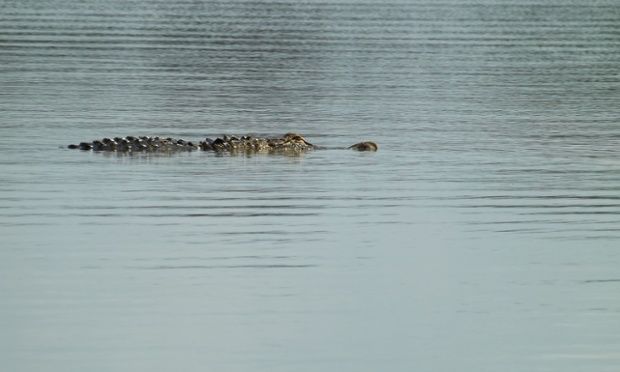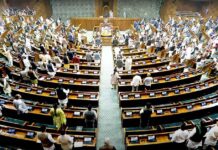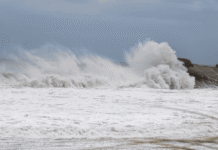Sri Vijaya Puram: The Supreme Court’s recent order to address the menace of stray dogs in the National Capital Region in a humane yet effective manner may seem far removed from the Andaman & Nicobar Islands. One deals with stray dogs in dense urban streets, the other with saltwater crocodiles in mangroves and tidal creeks. Yet, the principles the court invoked, public safety, humane management, and balanced policy-making, could offer a way forward for the islands in handling an increasingly contentious issue: the closure of tourist beaches due to crocodile sightings.
Over the past decade, several popular beaches have faced periodic closures following confirmed or suspected crocodile sightings. Wandoor, Madhuban, and parts of North and Middle Andaman have all seen shutdowns, in some cases lasting months. While authorities cite the precautionary principle, prioritising human safety when lives may be at risk, the closures have also hit the livelihoods of tour operators, small business owners, and the fragile tourism sector, which is still recovering from pandemic losses.
The parallel with the stray dog case lies in the Supreme Court’s balanced approach. In Delhi, the bench recognised both the suffering of bite victims and the right of animals to live free from cruelty. It called for a coherent policy that avoided extremes, neither unchecked culling nor unregulated growth, and stressed that decisions should be based on expert advice, implemented transparently, and reviewed periodically.
Applied to the Andaman crocodile context, this judicial reasoning points toward solutions that do not treat safety and ecological protection as mutually exclusive. Crocodiles are a long-standing part of the islands’ ecosystem, protected under the Wildlife Protection Act, and the administration has a legal duty to safeguard them. But it also has a moral and constitutional responsibility to protect the lives and livelihoods of residents.
Currently, the default response to crocodile sightings has been blanket and indefinite beach closures. While this satisfies immediate safety concerns, it risks creating a prolonged ban on tourism without exploring alternative measures. The Supreme Court’s emphasis on proportionality suggests policymakers may need to consider more nuanced responses.
In practice, this could mean adopting a tiered risk protocol: not all sightings require full closure. Measures could include restricted swimming areas, time-of-day controls, or enclosed safe zones for visitors. Investing in trained wildlife response teams capable of relocating problem crocodiles, as is done with leopards in Maharashtra or elephants in Karnataka, could also reduce the need for long-term shutdowns.
A public communication system, with visible signage and real-time alerts, would help visitors make informed choices instead of relying on hearsay. Transparency in decision-making is key; compiling and sharing data on crocodile sightings, attacks, and relocations could address perceptions that closures are arbitrary.
The Supreme Court’s Delhi ruling did not ask residents to live alongside dangerous dogs without intervention, nor did it permit indiscriminate removal. Instead, it called for proportional, humane, and evidence-based action. These principles are not bound by geography or species; they can guide the Andaman administration in balancing tourism, public safety, and wildlife conservation.
The islands’ identity is shaped both by their biodiversity and by the communities that depend on tourism for survival. As with Delhi’s stray dogs, the challenge is not to favour one side over the other, but to create a workable framework that keeps both safe. The Supreme Court’s judgment is a reminder that such balance is possible, and it is now up to the islands to craft it for their shores.





